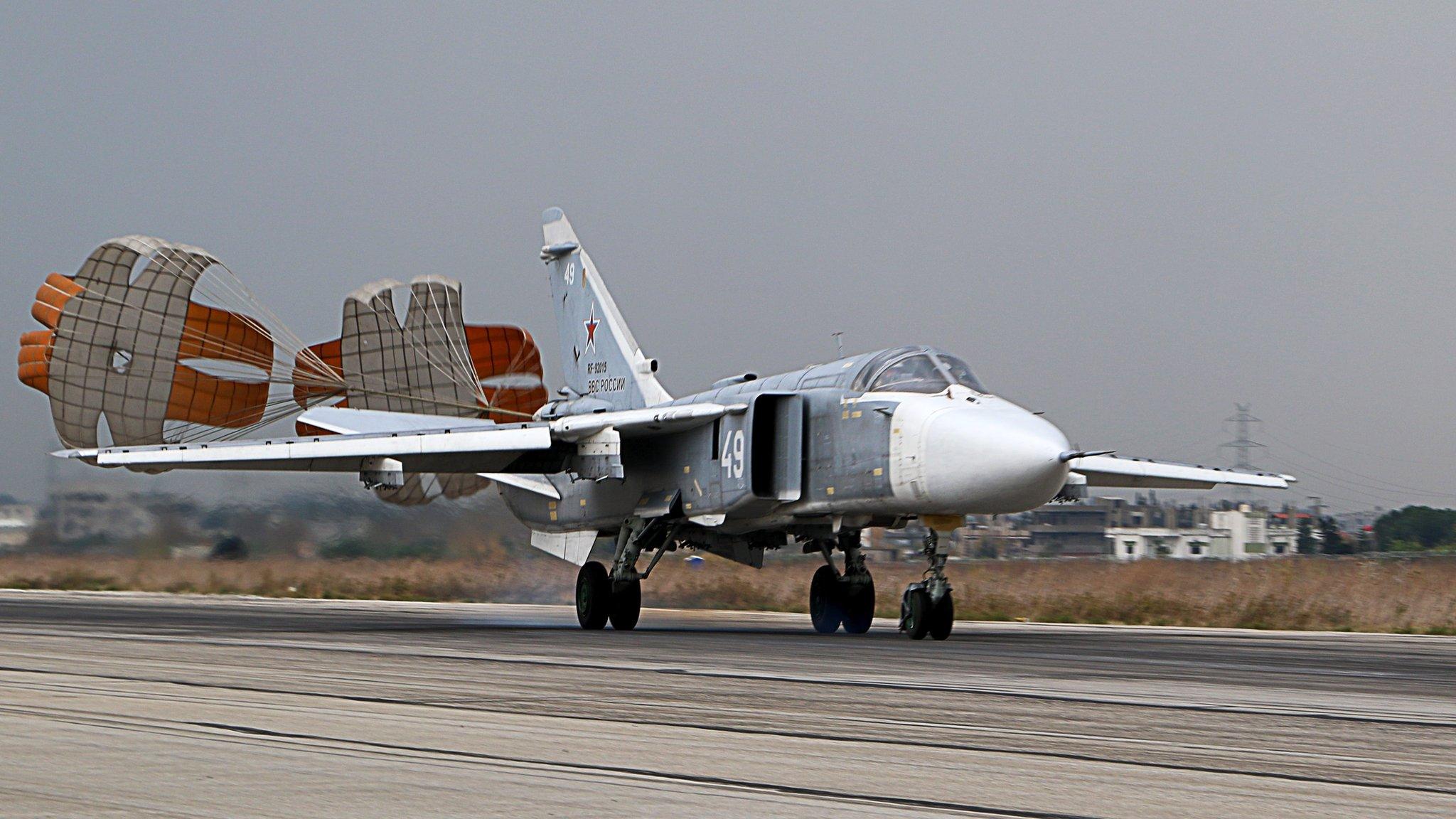Syria conflict: Russia's build-up looks long-term
- Published
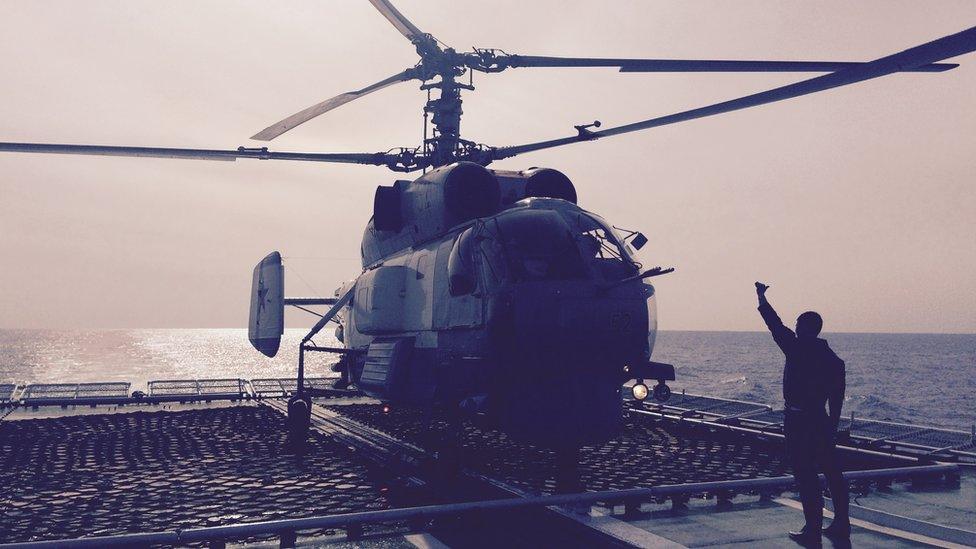
The skies over Syria are crowded as a number of countries are involved in military operations
It is now four months since Russia launched its military intervention in Syria, with air strikes and a build-up of troops on the ground. The BBC's Steve Rosenberg has been embedded with Russian troops and has sent this diary of his four-day visit.
Crowded skies
We last visited Russia's Hmeimim air base in Syria in November 2015.
A lot has happened since.
Ten days after our visit, Turkey shot down a Russian bomber near the Turkish-Syrian border, resulting in Russia's first combat deaths of this operation.
The skies over Syria are even more crowded now: Britain began conducting its own airstrikes in Syria in December, though their frequency is far lower than Russia's air force.
Now, the Russian defence ministry has agreed to take another group of journalists back to Syria. I'm on this four-day trip and I'm intrigued to see what has changed.
Steve Rosenberg was given access to the Russian airbase near Latakia, where Russia's sorties into Syria are flown from
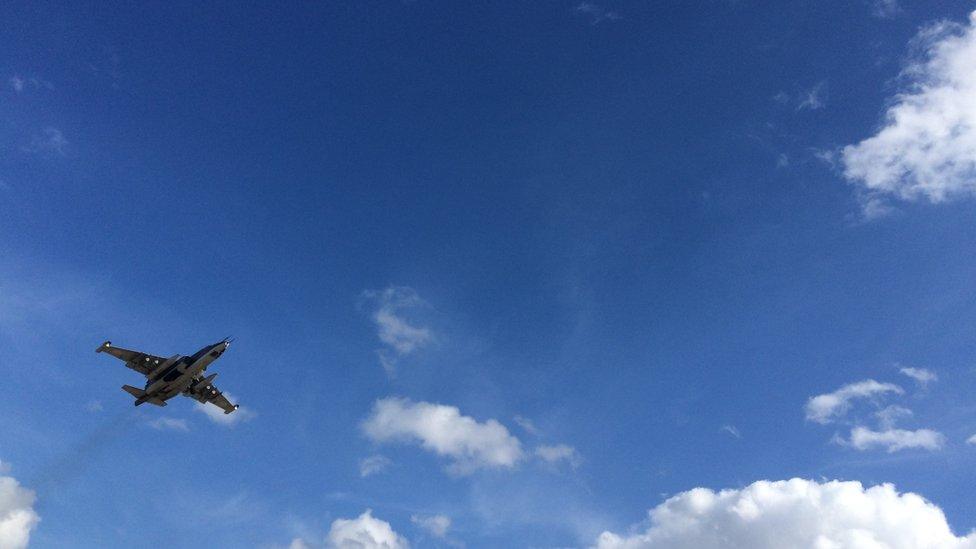
Russia's airstrikes in Syria outnumber Britain's, which began in December
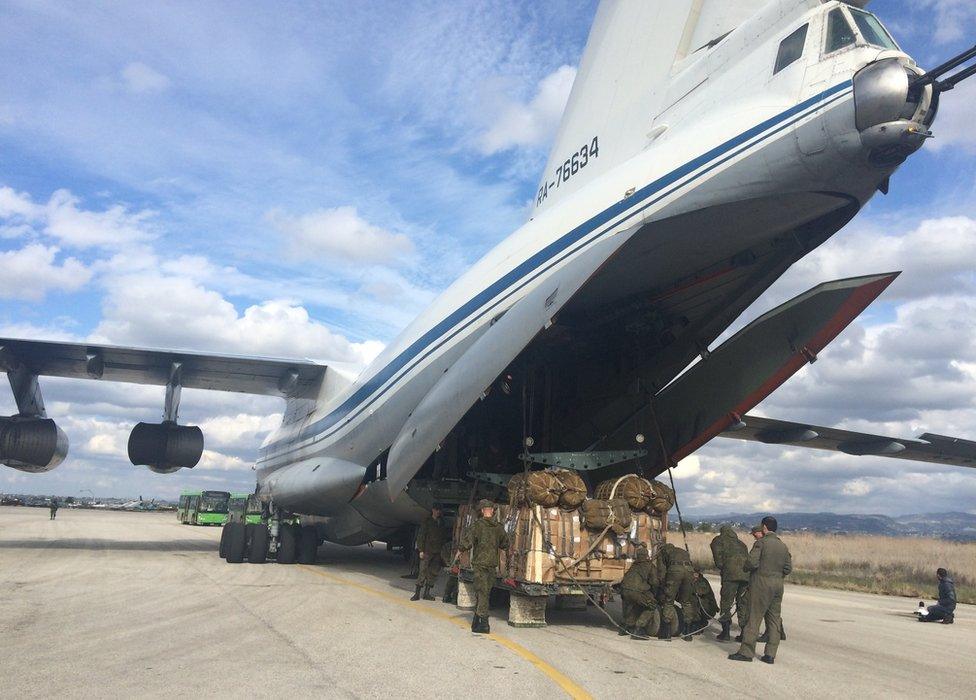
President Vladimir Putin promised the Russian operation in Syria would be 'limited in time'

Foreign-led air strikes on Syria first began in 2014
Back on base
In an Ilyushin Il-62 jet, we fly from a military airfield on the edge of Moscow to Hmeimim airbase near Latakia.
When Moscow launched its air campaign in Syria, it made it clear this would be a temporary operation. But nearly four months on, there is no sign of Russia winding down offensive operations.
During our day at Hmeimim, we see a steady stream of Russian bombers taking off and landing. Since our last trip here, the Russians now have use of an additional runway.
Behind the runway I spot the S-400 surface to air missile complex. This was installed after Turkey shot down a Russian jet last November on the Turkish-Syrian border. We are shown ammunition being loaded onto bombers.
Western governments have accused Russia of causing hundreds of civilian deaths with unguided munitions. I ask defence ministry spokesman Maj Gen Igor Konashenkov to respond to the criticism.
"There are no facts and no proof," he tells me. Igor Konashenkov is the only military man authorised to give interviews here on the base. We are told it's not possible to interview Russian soldiers who are serving here.
In another part of the base, the Russian military shows us humanitarian aid being loaded onto a transport plane. This will be dropped by parachute to communities around Deir al-Zour in eastern Syria, a town besieged by the so-called Islamic State group.

The Vice Admiral Kulakov, a Russian destroyer, is meant to locate and destroy enemy submarines
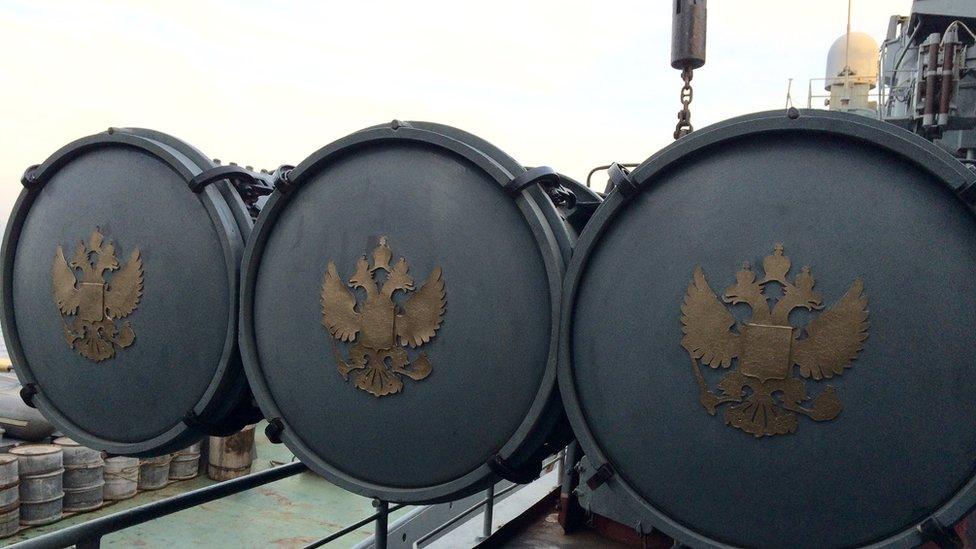
The double-headed eagle shows Russia's pride in her naval equipment, including these torpedo tubes
A day with the Russian navy
The Russian military press officials don't tell us in advance what each day's programme will consist of ("The less you know the safer you'll be," declares one of our guides). So, as we board the press bus this morning, we are unsure where we will be taken.
We drive south along the coast to Tartus. Russia has had a naval facility here since Soviet times. It's not a fully fledged base, more a repair yard and supply station for warships.
But this is Russia's sole outlet to the Mediterranean and, as such, one reason why Syria is so important to Russia. Access to Russian warships is rare for foreign journalists, but our group is allowed on board a Russian destroyer, the Vice Admiral Kulakov.
The vessel's main task is to locate and destroy enemy submarines. It has been deployed to the Mediterranean as part of Russia's military operation in Syria. When we set sail, Captain Varik gives us a tour.
We are shown the torpedo launcher: the covers on the torpedo tubes are decorated with double-headed eagles, the symbol of Russia. The ship has a 100mm naval cannon and missiles for sinking submarines.
I ask Captain Varik why Russia needs an anti-submarine destroyer here when the so-called Islamic State group has no subs. He tells me about other "threats" his crew are watching out for, such as "terrorists in speedboats with explosives."
In the distance we can see a Russian guided missile cruiser, Varyag. The presence of Russian warships in the Mediterranean is more than just about fighting international terrorism: it sends a message to the world that Russia sees itself as a global power.
Russian airstrikes have helped the Syrian army to take back a town from the rebels. From inside the Russian forces armoured vehicles, Steve Rosenberg reports
The road to Salma
The next day, the Russian army takes us into the mountains outside Latakia. We wind along narrow roads and through small villages.
We pass orange and mandarin groves, with dramatic views across to snow-covered peaks: a scene of beauty, in contrast to the brutality of Syria's five-year civil war.
After about an hour's drive, the three press buses stop. Correspondents and camera operators put on body armour and transfer to armoured trucks for the final leg of the journey. Inside our vehicle we squint through tiny windows to try to understand what is happening outside.
As we approach Salma, the scars of war became apparent: destroyed buildings; houses ridden with bullet holes; craters left by mortar fire; and the remains of a burnt out tank.
For our own safety, the Russian military tells us we will only stay in Salma for 40 minutes.

The scars of war are apparent in Salma, Syria
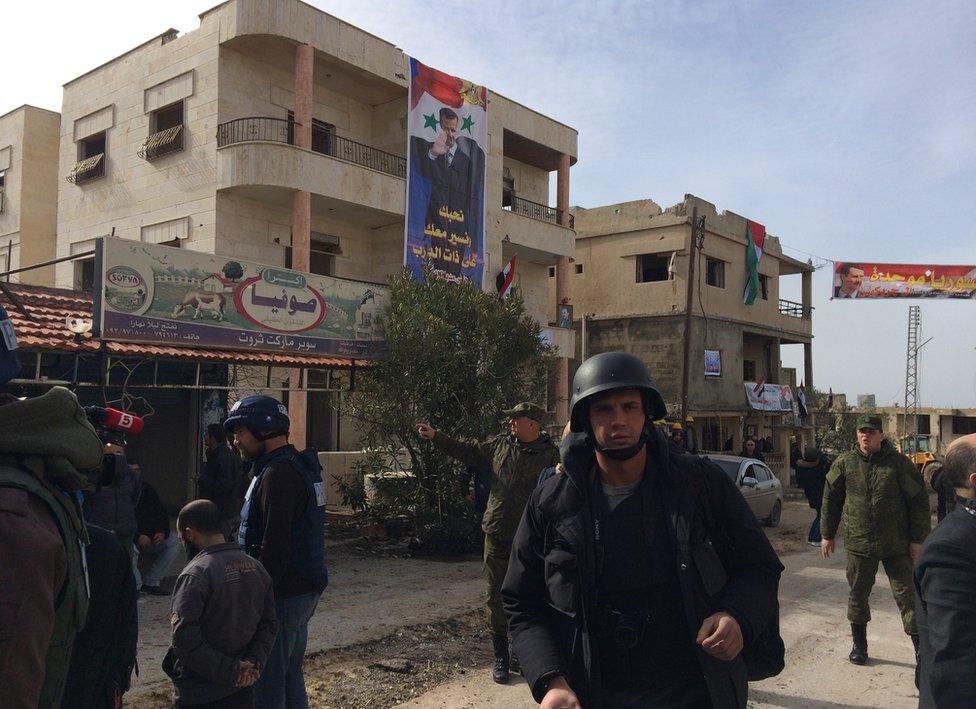
A week ago, the Syrian army re-took the village Salma from rebels
The Syrian army had re-taken the village from rebels a week ago (with Russian air support). But some of the buildings there, we are told, are booby-trapped. As we arrive in Salma, so does the governor of Latakia region, Ibrahim Salim.
He tells me that Russia had "helped Syria… by targeting terrorists, their weapons and their command posts." We return to the Russian air base and file our final TV report, before boarding the plane back to Moscow.
My overwhelming impression from these last four days is that Russia's military operation in Syria and its military presence are looking increasingly long-term.
President Vladimir Putin promised the Russian operation in Syria would be 'limited in time'.
But right now, there is no end in sight.
- Published17 September 2015
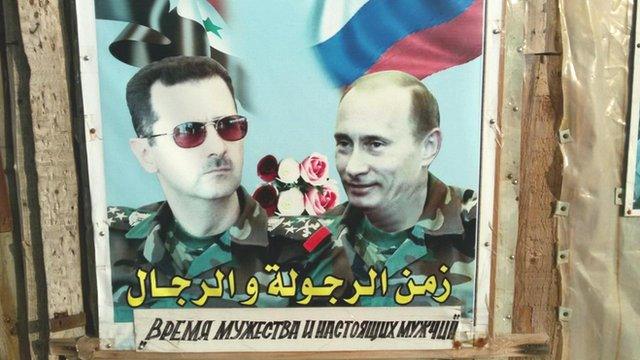
- Published19 December 2015
